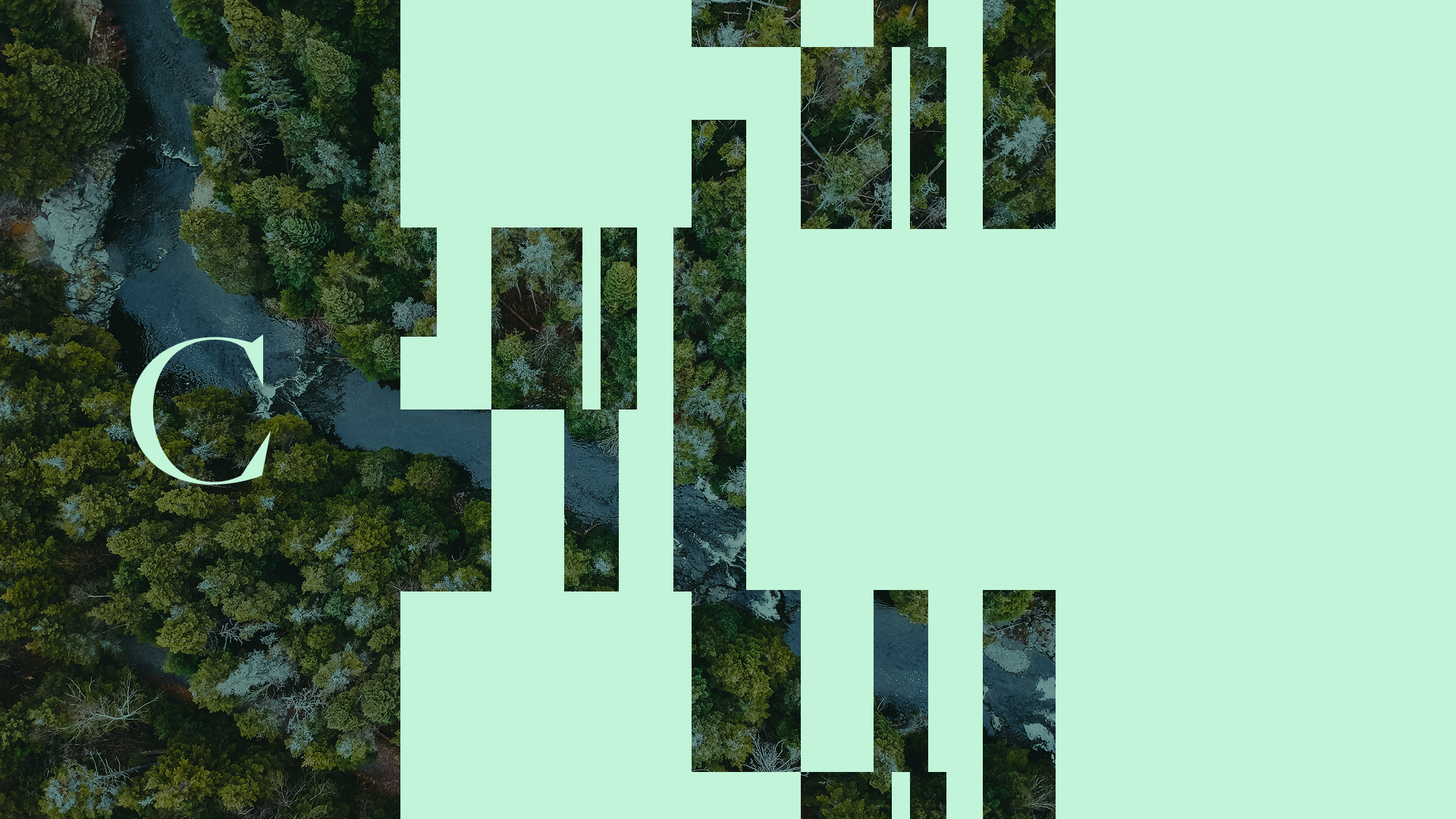I know a team of content marketers who want to be more creative—they’re dying to break out of just publishing articles—but they aren’t allowed to be. Their access to the design team is locked away behind a project manager who behaves like a tyrannical librarian.
She blocks everything unless it’s exactly to spec and comes in through a form. Sometimes, when they ask a harmless follow-up question, she copies everyone’s boss with a conversation-ending, “We have a process. Follow it. Thanks.”
This has created a wall.
Marketers and writers can’t interact with designers. They barely know who they are. All they can do is toss requests over the barricades. And that means this company’s content only ever gets input from a designer in its very final phase. Which is to say, those designers are forever stuck coloring within the crude lines left by a bunch of non-designers.
I’ll bet that’s frustrating for those designers. It’s no fun for my friend, either.
And I have to wonder. Does everyone who relegates designers to the last step of creation know what they’re missing out on? They’re failing to communicate with the other half of people’s brains.
The tragedy of treating design like a vending machine
Many marketers treat the design team like a vending machine. Visuals are the very last step, and by then, it’s a rush. They want to just insert copy, press a button, and get a graphic.
For their part, designers have probably only reinforced this system by asking to see finished copy before they begin. It makes marketers and writers feel they have to go through lots of cycles on their own before they’ve earned the right to involve a designer.
The result is that nearly every piece of content is planned through the lens of a writer. These teams are, in effect, missing out on an entire second brain.
Graphic designers spend vast amounts of time in parts of the internet you don’t go to. They’re scanning new typography on Typewolf, delighting in teardowns on Brand New, making mood boards on Dribbble and Pinterest, and debating trends like chonkified. (Firmly opposed, but that’s just me.) Designers have a very different perspective on what type of content you ought to be creating—what’s cool, what’s innovative, and what’s really going to surprise and delight readers beyond clever wordplay.
For example, how aware are you of the following visual trends, as even just a starting place?
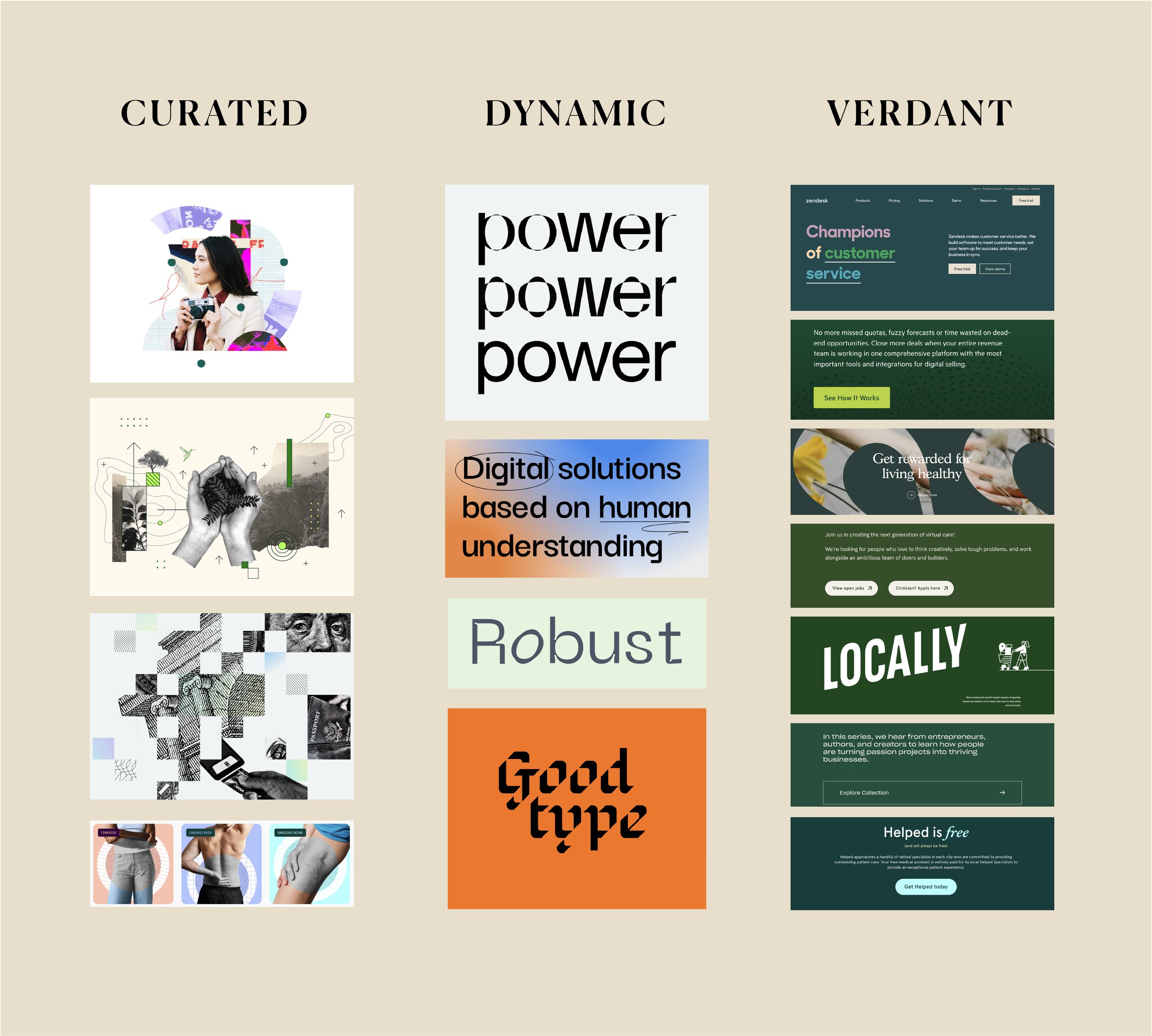
Plus, design is arguably the more important half of content creation. (Heretical, I know.) Poor design is far more upsetting than poor writing. If a layout is wonky, if text is hard to follow, or if the graphics are a weird mismatch, readers may never even begin to read.
Design is also the difference between being perceived as innovative or not. People see it as a proxy for your product. If your graphics are cutting edge, people presume your software is only more so.
Even writers have a design bias. In Fenwick’s own newsletter which is mostly for writers, the most-clicked items are always about design—slick microsites, unapologetically bold B2B brands, and great fonts. Everyone gets excited by graphics.
But—and this is back to my original contention—by the time a typical brief fights its way past a tyrannical project manager and reaches a designer, it’s basically set in stone. And that’s how your most creative team gets demoted to a gang of pixel pushers.
This is why so many businesses dust off the trusty old ebook template and repeat the same stale format for years rather than invest the same resources into something new and surprising. If designers had more input, they’d all have more fun. They could just as easily turn that same material into a:
All the above formats can also be gated, templatized, and repeated, so they don’t even have to cost more. (Save maybe the video game.) But they have the benefit of being fresh, new, and not another PDF gated asset. (Which, nothing against PDF gated assets—we’re big fans—but that can’t be your only play.)
Sometimes, the mere sensationalism of doing things differently gives your content a serious competitive advantage.
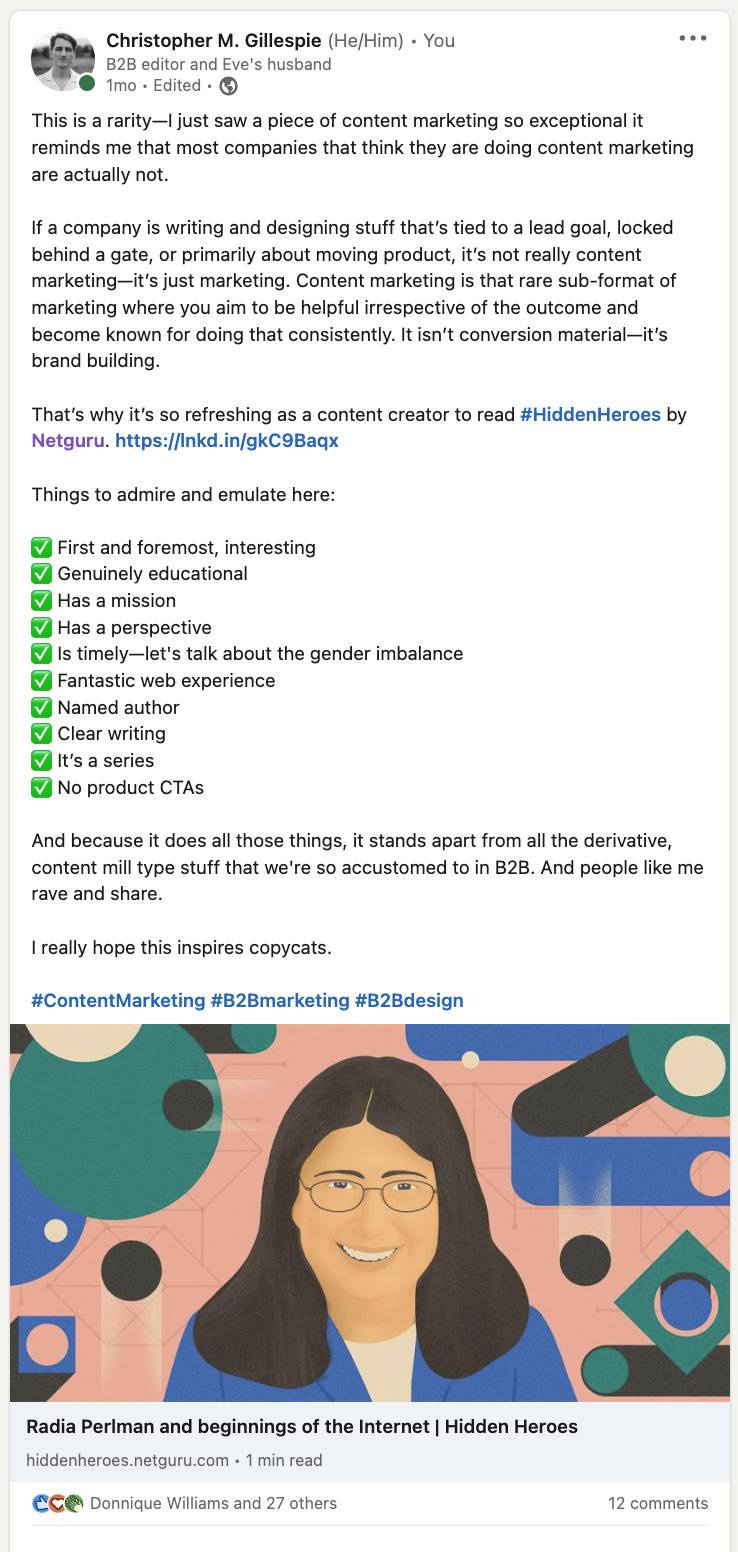
So how can you unlock all that latent design potential in your org? I asked Fenwick’s two design directors. In fact, I asked them when this article was just an idea, and true to form, their input changed everything.
How to Get Vastly More From Your Design Relationships by Involving Your Designer Early
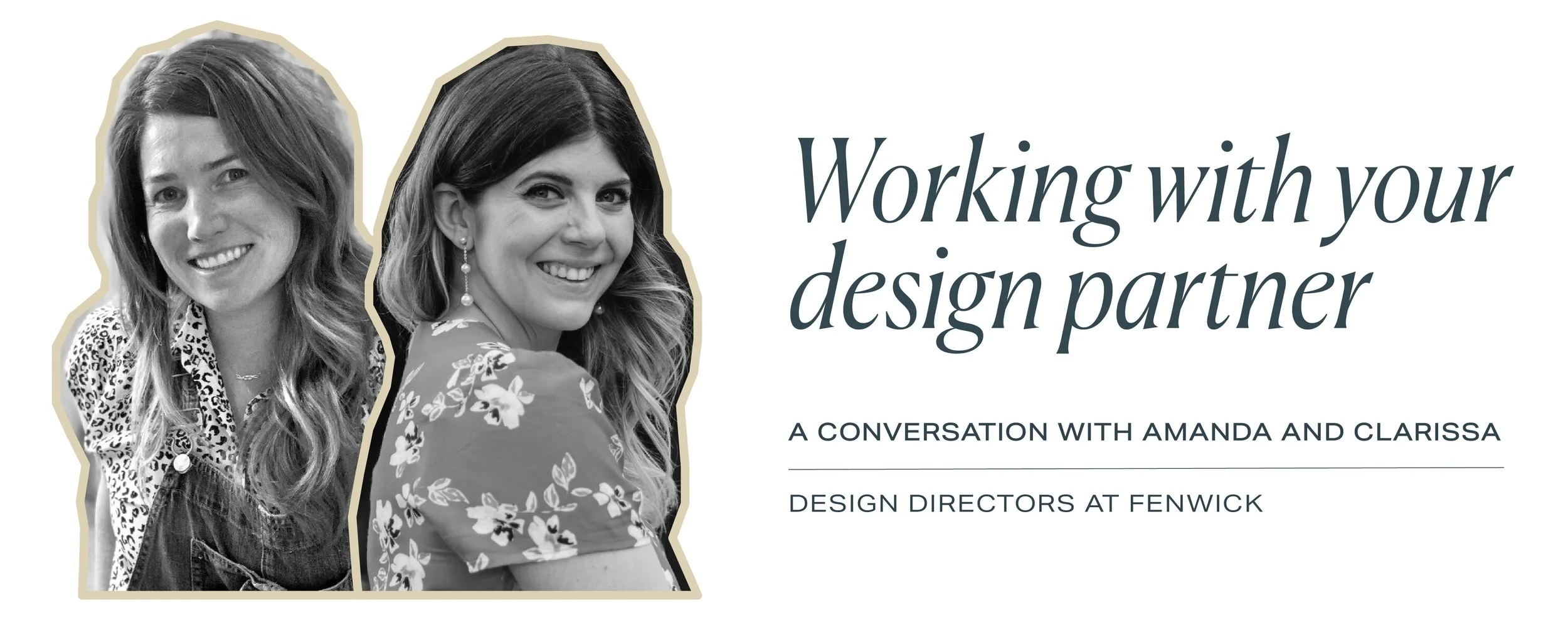
First, I’ll make a distinction that Amanda and Clarissa, Fenwick’s Co-Design Directors, felt was important: A designer is not a designer is not a designer. No two are alike, and some are more equipped than others to be brought in early.
For instance, is your design person a creative director with experience pitching ideas or a production designer who’s happiest when provided strict instructions? The more leadership experience yours has—and the more comfortable they are filling a blank canvas with ideas—the more likely Amanda and Clarissa’s instructions are to work.
1. Involve your designers when it’s just an idea
Add your design partner to (nearly) every planning call. Yes, I know. Their project manager will flip out. It feels messy and inefficient. But you are adding a second brain with a second pair of eyes, and they’re going to see things you cannot. Fenwick does this frequently and we find lots of cool things.
For example, we did a rebrand project for a startup founder, and he’d used a rather strange palette within the software he’d built. I thought nothing of it. But Amanda thought to ask why, and we learned that he’s colorblind. He literally sees the world differently. That influenced the corporate identity we built for him.
“Great storytelling is born from the co-exploration of an idea,” says Clarissa, who, similarly, joins client projects right from the start. “Recently, we had a client launching a webinar series for busy and stressed accountants. Rather than pack in more advice, I had the idea to do less, and introduced a mantra slide where the speaker would pause and offer words of affirmation. It was so well received, an attendee printed it out, framed it, hung it on their office wall, and sent a picture.”
(Update: This has now happened several times, independently: A whole bunch of people had the same idea to print this and frame this slide. It’d say that’s the definition of “resonating.”)

2. Encourage your design partner to follow their curiosity
Give your design team time to do their own ideation. And probably, plan time for your designer to meet your subject expert and to talk concepts. By doing this, Amanda often helps companies turn okay interstitial graphics into something that both explains and guides. “On a recent project, we were unsure how to bring a graphic to life, so I scheduled time to talk to the subject expert,” says Amanda. “Ends up, he didn’t love the first version of the graphic either. But he felt he didn’t have the drawing skills to bring his real dream analogy to life. What was it? A sandcastle. After a lot of playing around with that idea, we realized it could serve as both an analogy, and a sort of progress bar as you scroll through the article.”

3. Leave time and budget for your design partner to involve experts
There are lots of design specialties, and the best-designed projects are a collaboration between a bunch of highly skilled, somewhat narrow experts.
“Nobody’s a Swiss Army Knife, and concealed within the title ‘designer’ are dozens of potential areas of expertise,” says Clarissa. “Your design partner is likely a specialist in one or two areas, and a generalist in all the others. If you rush, they’ll have to do everything. But if you leave time, they can find experts to innovate in areas they can’t.”
Video production is a great example. If you want the best quality, you’ll want to involve a project manager, a set designer, a videographer, an editor, and a motion graphics designer like one of our favorite freelancers, Ari Mimiko.
And for Fenwick’s own brand, none of us have put ten thousand hours into delicate line drawing, so we rely on the freelance artist Haven Peckover to do things we cannot.
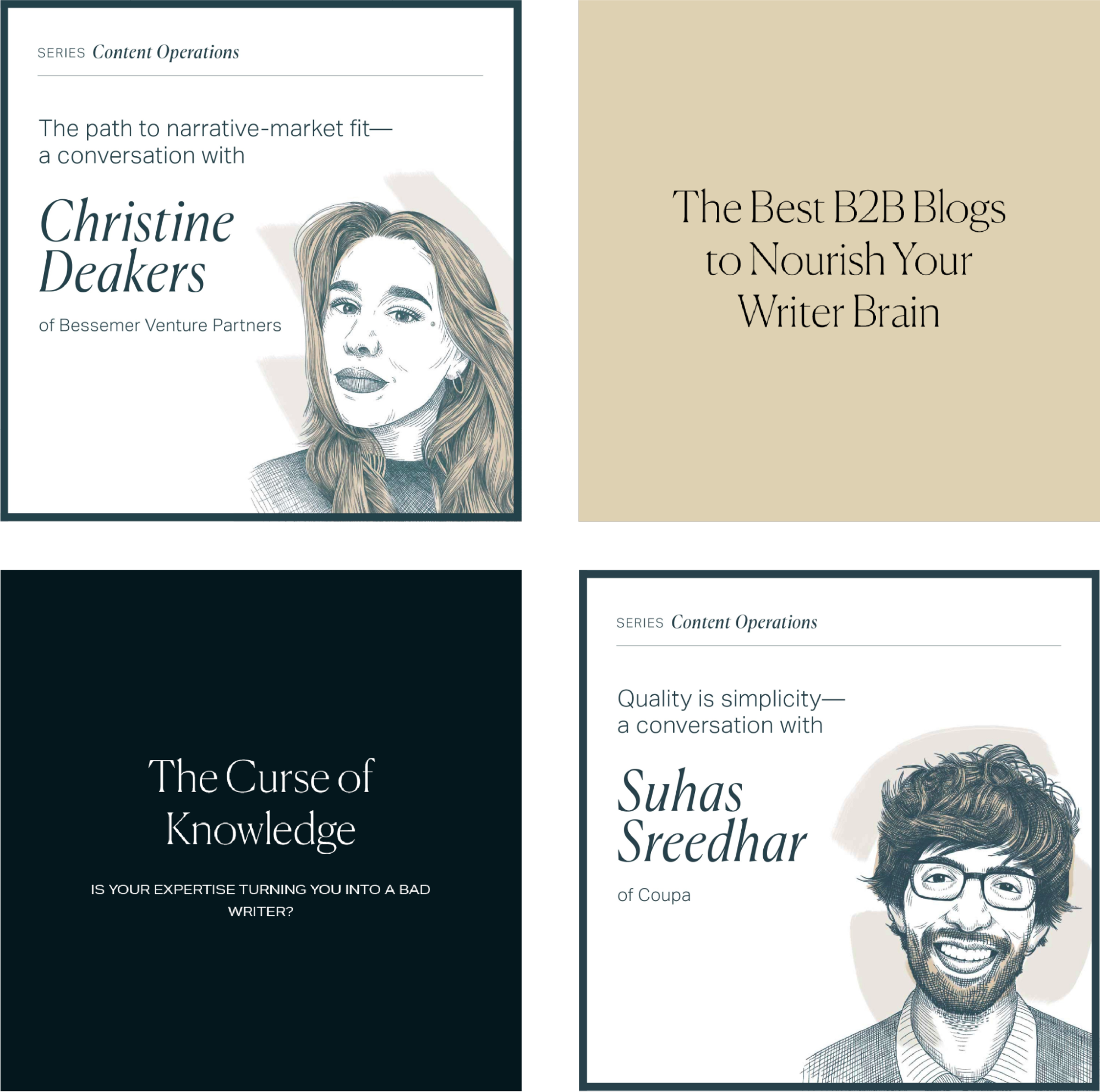
Time to Talk to Your Project Manager
Involving designers early can seem wasteful. It feels like a violation of most companies’ beloved waterfall process. Some project managers will hate it. And sometimes, nothing comes of it. But the few times that you involve your designer early and they have the freedom to say, “What if instead, we did this?,” it’s all worth it. Your content breaks out of the normal, and actually thrills and excites.
And the value of that collaboration only grows as you work more together.
So, this week, crack open the design vending machine. Invite your designer to coffee, give them a seat at your next planning session, and see what happens when they aren’t forced to color within the lines.
